The temperature controller is an indispensable thing for an individual heating system. It not only saves gas, but also makes your life more comfortable. A very pleasant combination of qualities, isn't it? I hope my story will convince you to start using it.
Why you need a room thermostat
It would seem, why complicate the circuit and cling to an additional device? After all, any heating boiler has its own temperature controller. IN simple models this is a mechanical twist with the numbers 1, 2, 3 ... More modern automation is more expensive in boilers, which allows you to set the temperature with an accuracy of one degree. However, in both cases, we are talking about the temperature (of water in the heating system), and not of air. Why is it bad?
As an example, let's take my "three-ruble note" in an ordinary Khrushchev, where two windows face north and two - south. What happens on a clear day? Even in winter, the sun noticeably warms up the southern rooms, and it gets a little hot near the window. In a natural way, the heat spreads to most of the apartment and the need for the included heating disappears for several hours.
All this time, the gas boiler, located on the north side, continues to work. After all, heat does not reach there, and the water in the circuit cools quite quickly, giving the boiler a command to turn on. Since there is not much water in the heating system, it quickly heats it up and turns off again.
Thus, the operation of the boiler without a room thermostat looked like this for me: it turned on, worked for 2-3 minutes, turned off, turned on again after 10-15 minutes. Needless to say, such a regime negatively affects both gas savings and the resource of the boiler itself. So a few years ago I bought
Mechanical thermostat for heating boiler
The simplest device, which is a small box with a built-in sensor and temperature controller. Connecting a room thermostat to the boiler automatically changes its mode of operation. Now it does not depend on the water in the circuit, but on the ambient air, which cools down much more slowly.
By setting the thermostat to a comfortable temperature, you can forget about its existence. The boiler will turn on much less frequently, which saves you gas and, accordingly, money. When leaving home for a long time or leaving for several days, you can set it to 15-18 degrees, which will further reduce consumption.
The simplest model costs from $15 and saves you this amount for an incomplete season. Comparing the consumption "before" and "after", it turned out that the savings amounted to about 15-20%. Before installing the thermostat, at least 200 cubic meters of gas were consumed, after that it became no more than 170.
The device suited everyone, except, perhaps, appearance who did not fit into his wife's ideas about modern design. So last year it was replaced
Programmable thermostat for heating system
Performing the same functions as a mechanical thermostat, the programmer has a number of additional "goodies".
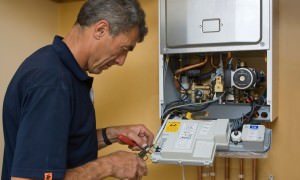
Among the shortcomings can be noted a higher price (from $ 30) and the need for periodic replacement of batteries.
After spending several days studying the capabilities of the device and experimenting, I settled on the following scheme for everyday life:
from 00.00 to 06.00 - 19°C
from 06.00 to 08.00 - 21°C
from 08.00 to 17.00 - 18°C
from 17.00 to 22.00 - 21°C
from 22.00 to 00.00 - 19°C
On weekends, the temperature controller operates in a different mode:
from 00.00 to 07.00 - 19°C
from 07.00 to 22.00 - 21°C
from 22.00 to 00.00 - 19°C
The result made me incredibly happy, and even somewhat surprised. In total, the time of "clean" operation of the boiler was reduced to 2-4 hours a day. It's in the cold. At positive temperatures, heating may not turn on for a day or even more. Despite the fact that all windows are open almost around the clock for micro-ventilation, the temperature in the apartment does not fall below 21°C.
Gas consumption has broken all previous records and now rarely exceeds 150 cubic meters. In fairness, I note that this is hardly the merit of the thermostat alone. Simultaneously with its installation, insulation work and replacement of double-glazed windows with energy-saving ones were carried out. Of course, this affected the reduction of heat loss.
What I can say for sure is that the programmer in combination with insulation gives stunning results. Using a thermostat for a heating boiler, you can achieve maximum efficiency of the entire system and save a lot of money.
Effective control plays an important role in the heating unit. With proper implementation of the control parts in the boiler, you can achieve energy savings, arrange a comfortable microclimate, get rid of overheating or cooling the room. One of these automatic parts is the thermostat.
An automatic device that maintains a given temperature is called a thermostat. A sensor may be built into its design or it may be located outside it. The sensor captures information and transmits it to the zone of the device itself, from where the command is transmitted to the information zone of the boiler, and the unit starts or stops.
There are devices with mechanical and software control.
Purpose:
- Automate combustion processes and make heat transfer to the heating circuit.
- Heating medium temperature control, premises.
- Prevent crashes heat increase.
Principle of operation

The principle of operation of the solid fuel boiler thermostat
The temperature of the coolant is set on the boiler, when the temperature of the liquid drops, a certain signal is issued and the unit turns on.
Using a thermostat makes it possible to control the room temperature. A sensor is built into it, which is located away from the heating facility, and the device reacts to the environment. The information received from the sensor is transmitted to the control of the unit, on the basis of which it turns on or off.
At the first stage of the invention of thermostats, the connection of two devices was carried out using wires. What can not be said about modern models, now the work is carried out remotely. Thermal devices control and regulate the consumption of energy resources, the temperature of the building, and prevent overheating or hypothermia.
Advantages and disadvantages
Pros:
- Increase the thermal comfort in the room.
- Saving electricity consumption.
- Warning of an emergency situation in the heating circuit.
- Ease of connection.
- Ease of maintenance.
- Wide range of models.
- Fuel economy.
Minuses:
- High price.
Kinds
Central
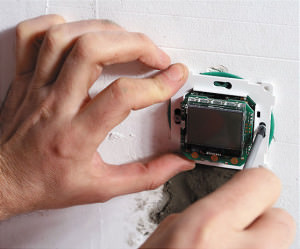
In this form, the temperature of the entire system is controlled. Its installation is carried out in coordination with the boiler. Special wires or other options for wireless transmission of information are used. The element is powered from the mains, although there is some autonomy from the equipment. This type controls the heating of the boiler and the coolant. Devices are not used to correct individual rooms one system, but perfectly keep the entire heating system safe.
local value
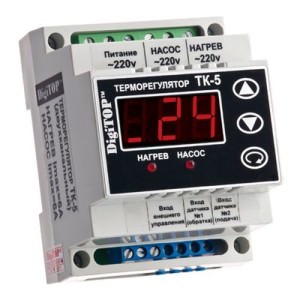
Unlike the previous view, this type can adjust the temperatures in individual rooms. The device is installed in coordination with the boiler. There are some requirements for their location: it is impossible to mount near doors, boilers and windows, as this will distort the temperature data.
The presence of sensors makes it possible to monitor the expansion of the coolant, and thanks to this, the temperature is regulated. Devices of this option can communicate with the boiler for the second time, and if there is an emergency temperature of the circuit, the operation will be suspended and the boiler will turn off.
for radiator
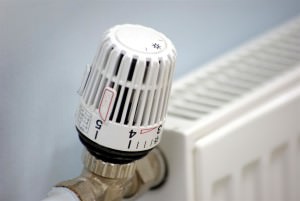
The thermostat controls the temperature of all radiators separate from each other. The radiator includes a valve for reducing and increasing the flow of liquid or gas inside, as well as a thermostat that regulates this procedure. In order for the device to work correctly, a hydraulic calculation is made for a specific heating system (forced or natural circulation, single or double circuit).
room
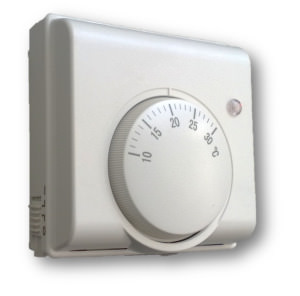
It has the ability to program a specific mode. For example, you can set the heating of the coolant for the night, for the day, a cooler temperature. Its design includes sensors, and they must be placed in different places in the room. They should not be influenced by external factors.
Models without programming have a simple operation scheme. The device has a small wheel that sets the desired temperature in the building. As soon as its threshold is reached, the contacts will close in the device, and a signal will be transmitted to the control part. Any command to open or close a particular valve will be executed in the servo drive.
The types of functions can be distinguished:
- Single operation devices when only the temperature is maintained.
- Multi-operation, where various functions are programmatically enabled.
By design, to match the boiler:
- Wireless.
- With wires.
Devices are installed in any convenient place, the temperature sensor is connected and connected to the control area of the unit. The location of the room appliance must not be covered by, for example, curtains, furniture.
He wants contact with a constant flow of air, this will provide normal work devices. Another detail - the location of electrical appliances (TVs, lamps, etc.) nearby is also undesirable.
Criterias of choice:
- Production of a thermostat and a boiler by one manufacturer.
- Manufacturer.
- Characteristics.
- Options.
Installation / connection and configuration
When mounting a wired device for temperature control, we select a non-sunny area of the room. We will fasten at a distance of 150 cm from the floor. There are terminals on the sensor with the letters COM and NO, we connect a thin two-wire wire here, it must be connected to special terminals (for the thermostat) of the boiler.
The power supply will be finger batteries in the amount of two pieces.
In the wireless type, we will not pull the wires. We connect the executive part to the boiler, and we place the sensors at different points. The signal from the sensor is not afraid of concrete floors and other obstacles.
The device also runs on AA batteries.
You can install them not in one copy on different pumps, but several, you just need to set up the signals so that everyone understands their command. The instrument is set up according to the attached instructions, since each type has an individual adjustment.
Price
The cost of production depends on the method of execution, manufacturer, brand, characteristics.
For example, a thermostat-programmer from Ariston costs 4,000 rubles. Outdoor temperature sensor, Italian production - 1000 rubles.
How to do it yourself?
The thermostats that are provided on store shelves have a reliable design, but people who are versed in electrical engineering are trying to make the device on their own.
To do this, stock up on component parts, such as a digital display, microcontroller and other elements, and proceed to assembly the simplest circuit at the first stage. Only having received a positive result, you can complicate the task.
Temperature control algorithm
We invite you to get to know circuit diagram device, which reflects the algorithm of the device. Here we see that an element is required to measure the temperature and transmit the signal to the post-processing node. The last element amplifies it and transmits the command to the relay, which serves as an actuator.
Let's consider the simplest scheme.
In order for the current to pass only in one direction, we use a zener diode, since it additionally has control contacts, in comparison with a simple diode.
We apply voltage to the element and in the open state, it will pass current. As soon as its value decreases to the lower limit, the chain will break. The logical control of the circuit here is carried out by a zener diode.
Circuit with a zener diode:
Circuit with a zener diode
We present it in two parts. On the left side of the diagram we show the part preceding the control contact of the relay (K1). The thermal resistor (R4) is the measuring element. If in environment As the temperature rises, its resistance decreases.
The temperature can be adjusted manually, for this we make the setting in the circuit variable resistor R1.
The circuit is powered by a voltage of 12 V. In a closed circuit, with the relay on, the control contacts of the zener diode will have a voltage of 2.5 V.
As a power supply, you can use any inexpensive device.
It is better to take a reed relay, for example, RES47 or RES55A. The thermal resistor can be models MMT, KMT or similar.
The principle of operation of the circuit is as follows: the temperature is set to a certain limit, and when it rises above the threshold, on element R4, there will be a drop in resistance and voltage (less than 2.5 V) and the circuit will break.
The power section will be switched off synchronously by the resistance on the right side of the circuit. The thermal relay, equipped with D2, plays the role of an executive unit and the voltage on it is 220 V.
Temperature controllers for heating boilers: types, prices, characteristics. Given the rise in energy prices, the issue of energy conservation is extremely acute. That is why a large number of models of heating devices that consume fuel economically have been developed. However, the equipment itself is not enough. The most rational use of energy resources will help the thermostat for the heating boiler (thermostat), which allows you to control and maintain the set air temperature in the heated room.
The thermostat is designed to set the optimum temperature in the room
Purpose of thermostats for heating boilers
To be able to control the energy consumption of heating equipment, it is equipped with special devices - thermostats. These devices allow you to use fuel efficiently by turning off the equipment when the set temperature level is reached. Thermoregulators are used for electric boilers, gas and solid fuel boilers, as well as convectors, heaters and other heating systems.
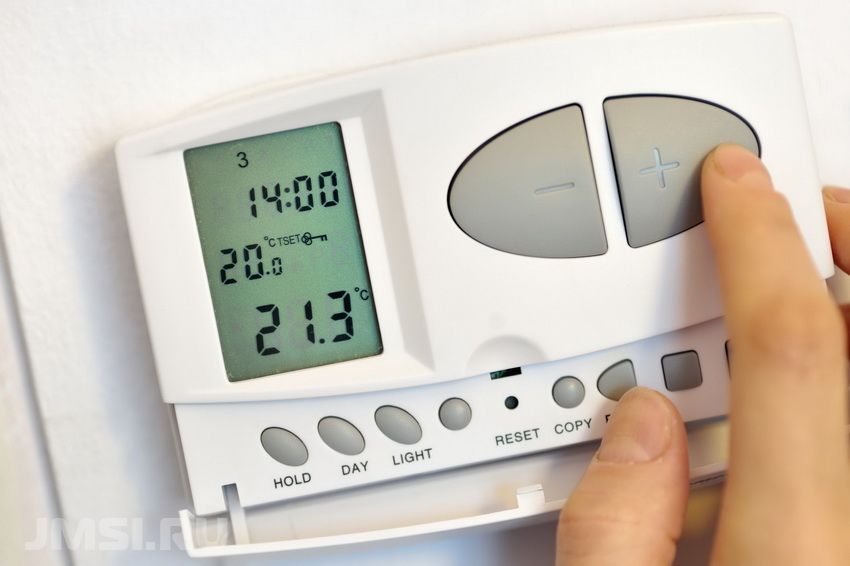
The thermostat is able to respond to temperature changes and turn on and off the heating equipment in automatic mode
To achieve economical operation of the heating boiler, the thermostat turns on the equipment when the temperature drops below the set temperature and turns it off when the set value is reached. This method avoids unreasonable consumption of gas or electricity, when, for example, some of the rooms are located on the sunny side and less heat is needed to heat them than for other rooms.
Helpful advice! Even a slight decrease in temperature within 1 degree helps to reduce energy consumption by 4-6%.
In addition, with the help of thermostats, you can set the operating mode heating system, at which the temperature in the absence of people in the house or at night will be 4-5 ° C lower. Thanks to this, savings in electricity or gas consumption of about 30% can be achieved. Thus, if your heating equipment does not have such a built-in device, it would be advisable to buy a thermostat for a heating boiler. The temperature controller will provide a solution to the problem of energy overruns.
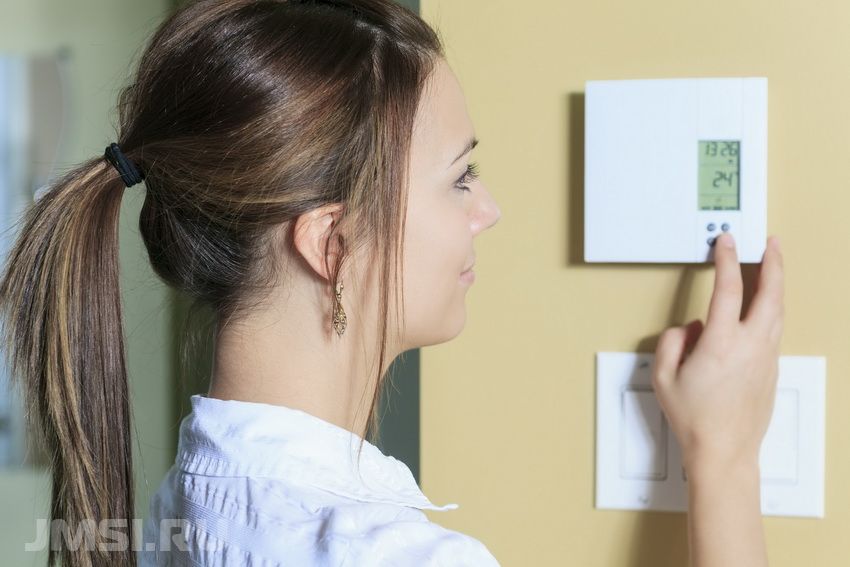
Using the thermostat, you can set different heating modes for different times
Types of thermostats for heating boilers
Equipping heating equipment with thermostats allows you to maintain a given temperature climate in the room with an accuracy of 1 to 0.5 degrees. They control the operation of the heating system using various executive devices. There are electromechanical and electronic thermostats. The design of a mechanical thermostat for a heating boiler has an on / off key and a rotary button to control the temperature.
Electronic or programmable thermostats are more advanced, but simple and straightforward to use. With their help, you can set the daily temperature cycle: in this case, the boiler will automatically switch to the specified mode. Such devices can regulate both the entire heating system and individual heating units.
There is a classification of devices into wired and remote-controlled. For the former, the connection of conductors is important, as well as external protection against mechanical damage. The quality of the signal supplied from the boiler to the controller, which informs about the flow of coolant into the circuit, depends on this. During installation, the question may arise of how to mask the signal line so that it is invisible.
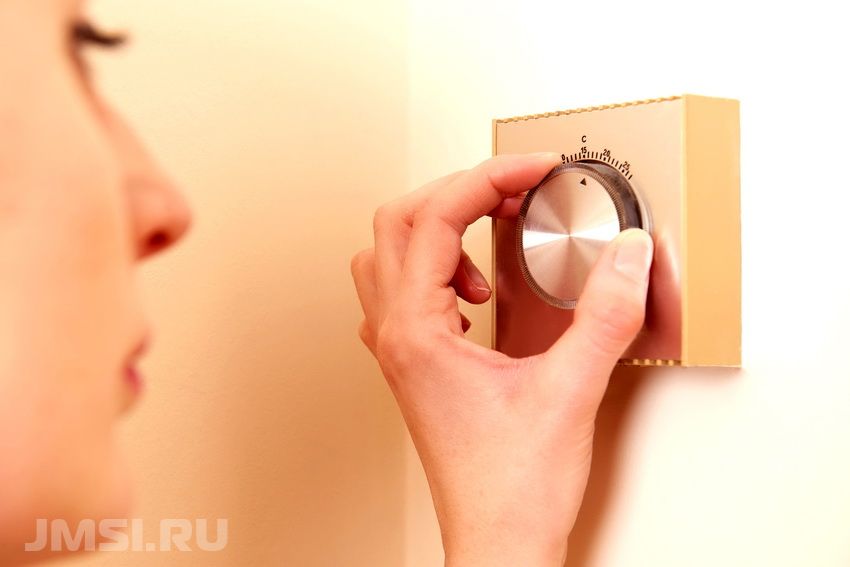
The simplest type of thermostat is mechanical
In the wireless thermostat for the boiler, control is carried out by transmitting a radio signal. Such a device has two blocks, one of which is mounted in close proximity to the heating boiler, connecting to the equipment terminals. The second node is located indoors. There is a dedicated radio channel between the two blocks. The control unit is equipped with a display and a control keyboard.
Depending on the degree of automation, thermostats can be digital or analog. The operation of digital devices is based on the signal of microcircuits, due to which the device can fix and apply several specified modes. Analog thermostats are controlled manually by means of a mechanical regulator connected to a rheostat.
Thermostat for a heating boiler (thermostat): which one is better to choose
Before you buy a thermostat for the boiler, you need to decide on the type of device. To do this, you need to understand what is the fundamental difference between models of room mechanical thermostats and electronic ones. There is an opinion that the latter are difficult to configure and they are unreliable, but this is not so.
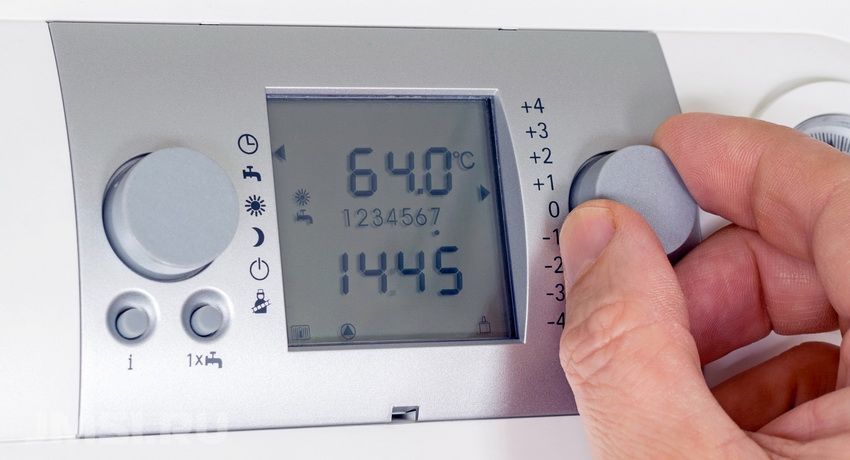
The electronic temperature controller is more accurate and has the flexibility of settings.
The principle of operation of a mechanical thermostat for a heating boiler
In most cases, mechanical thermostats for a heating boiler are used in gas installations. This is due to the fact that manufacturers of gas boilers initially produce devices that are compatible specifically with mechanical models of thermostats. The design of a mechanical thermostat has a gas membrane, inside of which there is a special gas.
When the temperature deviates from the norm, the volume of gas inside the membrane changes and the mechanism for closing or opening the heating boiler power system is triggered, respectively. This is a fairly simple way to control the operation of the boiler, when its operation depends on the temperature indicator not of the coolant, but of the air in the heated room.
Using a mechanical thermostat model, set an acceptable temperature regime is possible by turning the round button with divisions, which has a connection with the membrane. Thus, there is an approach or removal of the walls of the membrane to the control device: this is how we set the temperature at which the connection or break of contact will occur.
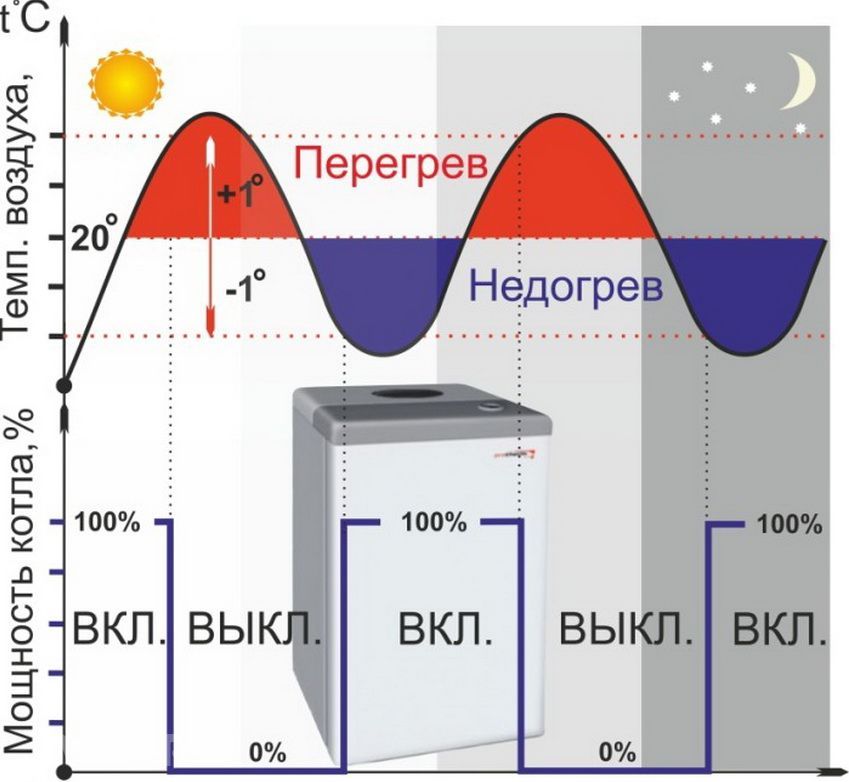
The thermostat allows you to control the temperature in the room with an accuracy of 1 degree
Helpful advice! The simple design of mechanical thermostats for heating boilers allows you to make the device yourself.
Among mechanical devices, Siemens room thermostats have proven themselves well. Models RAA21, RAA31 have a temperature setting range of 8-30°C. Devices with a laconic design are mounted like ordinary switches and do not violate the integrity of the interior line. Easy to install and manage. Estimated price of a room thermostat for gas boiler is 1500 rubles.
Of the advantages of mechanical thermostats, one can single out low cost, the possibility of repair and resistance to power surges. The disadvantages include the low sensitivity of the device to temperature changes. The inaccuracy can be up to 3°C.
Advantages of electronic wireless thermostats for gas boilers
The use of programmable wireless thermostats for gas boilers makes it possible not only to control the operation of heating devices, but also to do it remotely. Electronic regulation allows you to set different operating modes of the boiler, depending not only on temperature, but also on a certain time of day.
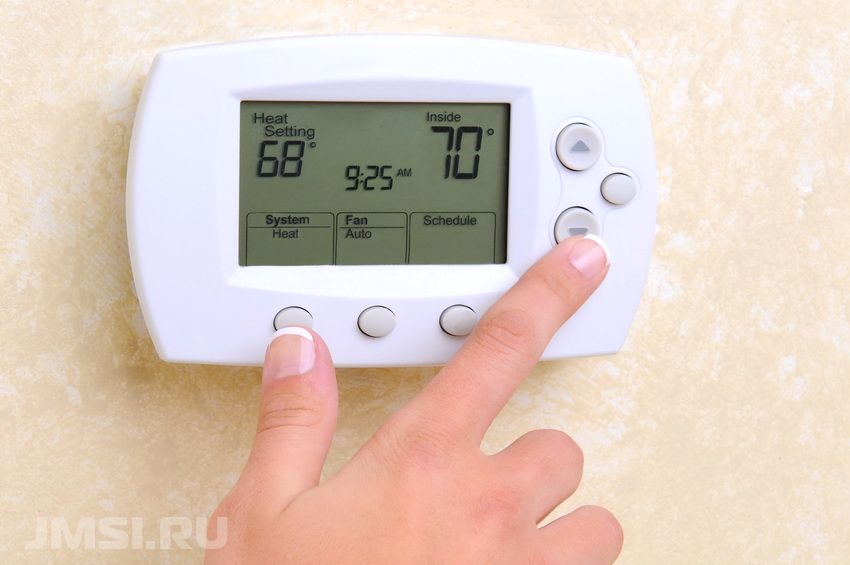
A programmable electronic thermostat allows you to set the desired heating mode for a certain period of time
By purchasing a wireless thermostat for a gas boiler with programmable functions, you can count on significant fuel savings. The acquisition of a relatively expensive device justifies itself within two heating seasons.
Modern models of thermostats are equipped with a GSM standard, which allows you to transfer information to a mobile phone via sms. Given the fact that boilers from leading manufacturers support Wi-Fi technology, and their electronic control unit is connected to a thermostat, it is possible to configure the operation of heating equipment via the Internet. Know-how in this area is the development of special applications for smartphones.
Convenient operation system, no need for wires, automatic control of equipment are important advantages in using a wireless room thermostat for a gas boiler. You can buy devices with additional options, such as joint control of the gas burner unit, equipment adjustment depending on the outdoor temperature, system diagnostics and other functions.
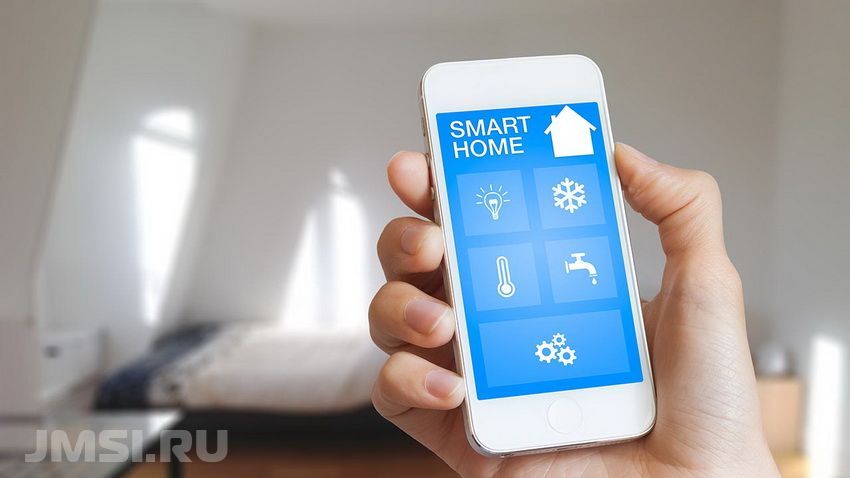
New generation thermostats allow you to control the microclimate of the room through special applications using your phone
Among the shortcomings of programmable room thermostats, one can, perhaps, single out the possible incompatibility of the latter with boilers, depending on their manufacturer. Such a snag appeared due to the large number of manufacturers of electronic equipment and gas heating equipment.
Helpful advice! Before you buy a thermostat for a gas boiler, you need to inquire about the compatibility of the device with the model of gas equipment from a specialist in the selling company.
An excellent example for autonomous heating are the models of room thermostats for the Baxi gas boiler. Devices allow you to set the temperature depending on the time of day and season, adjust the temperature in different rooms. In addition, they provide an economical mode of operation of gas equipment. Estimated price of a thermostat for a Baxi heating boiler of the AURATON 2030 RTH model is 6900 rubles.
Functions of room thermostats for gas boilers
Before you buy a room thermostat for a gas boiler of one type or another, you should familiarize yourself with its functionality. It should be noted that when choosing between analog and digital models, the latter have a lot of advantages and, accordingly, their price is higher.
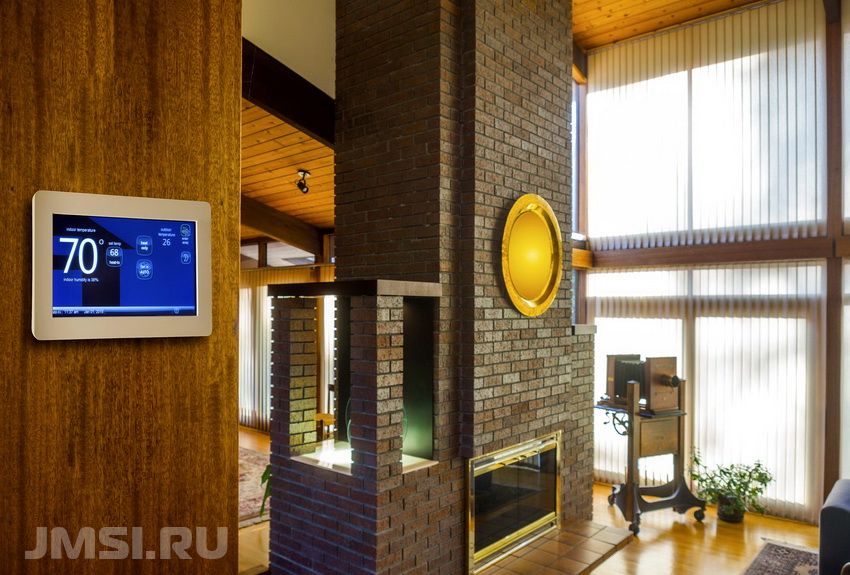
Installing a room thermostat for a gas boiler will help reduce fuel costs for space heating
However, the use of a programmable room thermostat for a heating boiler can significantly reduce the frequency of turning on / off the equipment, which has a positive effect on its operation as a whole.
An extremely important feature of the room thermostat for the boiler is the programming function, which makes it possible to set a comfortable microclimate depending on the time of day, weather conditions and other factors. The available timer allows you to set the desired parameters, taking into account the days of the week (working, weekends), the calendar season and other settings. This is very convenient for those who work in shifts or work part-time.
The main advantages of a programmable room thermostat for a gas boiler:
- remote control of the heater;
- the “day / night” setting makes it possible to set an individual level of heating, taking into account a certain time of day;
- ease of control allows you to quickly reconfigure the temperature in the room;

The principle of operation of a room thermostat for a gas boiler
- the programming option makes it possible to adjust the operation of the equipment, taking into account weather changes;
- due to minimal on / off, wear is minimized and the service life of heating equipment is extended;
- significant savings in energy consumption;
- high accuracy and reliability in work.
Helpful advice! By purchasing a room thermostat for a programmable boiler, you get the opportunity to control heating equipment at any time of the day, regardless of your presence in the house.
Scheme of connecting the thermostat to the heating boiler
After the model is selected, the question arises of how to connect the thermostat to an electric boiler or gas heating unit. The device is connected according to the recommendations specified by the manufacturer in technical passport for equipment. It is only necessary to find the necessary section in the documentation, which will describe the method of connecting additional devices to the boiler and provide all the required diagrams.

Scheme of connecting a room thermostat to a heating boiler
On some models of thermostats, the diagram is shown on the back of the decorative cover. All modern boiler models have connection points for a thermostat that will control the operation of heating equipment. Fixing the device is carried out by means of a terminal on the boiler at the appropriate point or using a thermostat cable (included in the kit).
According to professionals, wireless room thermostats should be installed in living rooms away from existing household electrical equipment (TV, refrigerator, lamps, etc.), since proximity to the heat radiated from them can lead to incorrect operation of the device. Some recommendations for installing a wireless thermostat for a gas boiler:
- For correct measurement temperature in the room, it is necessary to ensure free access of air to the thermostat;
- it is not recommended to cover the devices with furniture or heavy curtains;
- the device should be located in the coolest rooms or in residential areas where residents spend the most time;
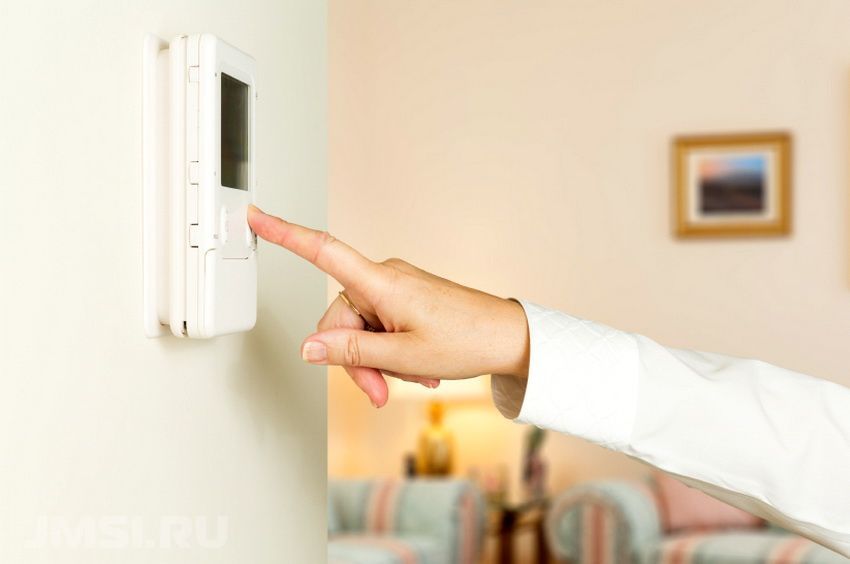
It is necessary to install the thermostat in an open area away from heating appliances.
- avoid direct sunlight on the device;
- do not mount the device near radiators or heaters;
- the devices must not be located in the draft area.
Helpful advice! Room thermostat sensors for heating are triggered when the room temperature changes by 0.25 degrees.
Heating control with a thermostat for a gas boiler
You can control the operation of heating equipment using the manual setting or by means of a thermostat for a gas heating boiler. I would like to note that using manual settings, you can set the temperature of the coolant in the system. Such functioning of the equipment does not react in any way to changes in the air temperature in the room, and if this occurs, you will have to manually reconfigure the boiler again.
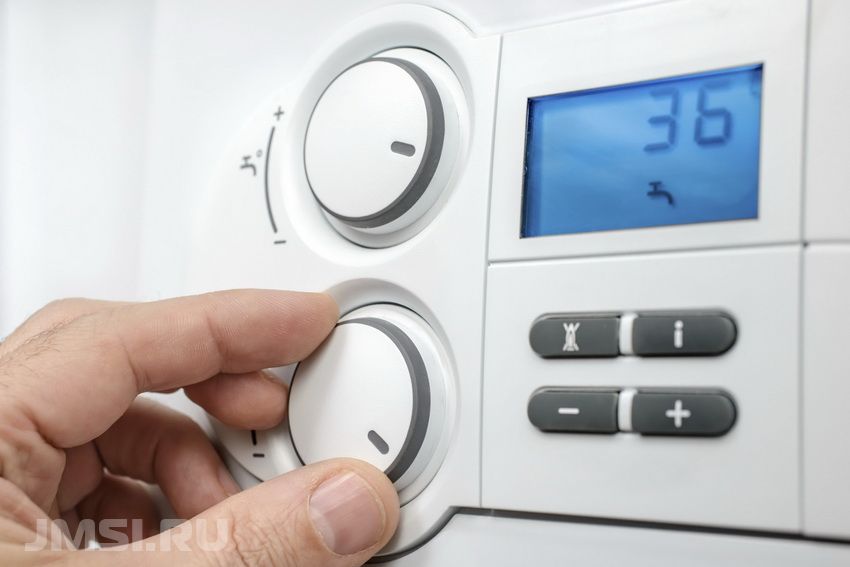
You can control the operating modes of a gas heating boiler both manually and through a thermostat
The operation of the boiler in the case of manual control is associated with frequent switching on and off of the equipment, as well as the operation of the circulation pump, regardless of whether the unit is in operating or standby mode. This causes heating equipment to wear out quickly and does not contribute to efficient fuel consumption.
If we are talking about control using a thermostat for a gas boiler, then such a device sets the optimal mode for the unit, taking into account the air temperature in the heated room. If, for example, there was a sudden warming and the room received additional heat from the sun's rays, the thermostat will instantly react and give a signal to the control device to turn off the boiler.
Considering that with the help of a thermostat (temperature controller) for a gas boiler, you can set the required temperature in the room, heating will be carried out only if it is lowered. Thus, if the device is set to 20°C, and during the day the room is also warmed up due to the heat of the sun or the operation of cooking appliances, the boiler will be in the waiting state for a long time.
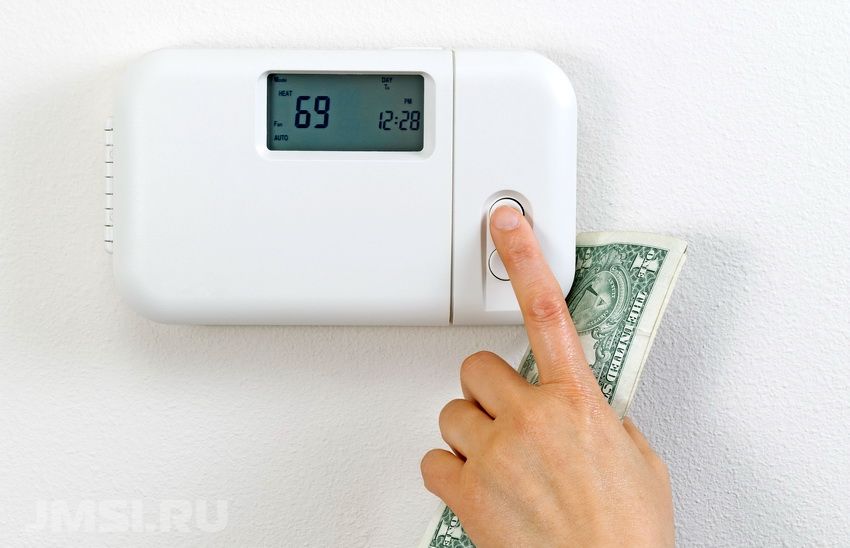
The thermostat helps to reduce heating costs by 30-40%
In this case, fuel consumption will be significantly lower. Before you buy a thermostat for a gas heating boiler, you should ask how to properly configure the device.
Setting the thermostat (temperature controller) for the heating boiler
After you buy a thermostat for a heating boiler and connect it to heating equipment, it will need to be configured. Each product comes with an instruction manual that explains how to set it up. Having carefully studied it, you can independently set the necessary mode that meets the individual level of microclimate comfort.
On the external panel of the device there are buttons and switches, through which the setting is carried out. The switches allow you to control the heating and air conditioning of the air space, start delay (does not allow the boiler to start when the temperature drops for a short time, for example, a draft) and temperature deviation (if you set the fluctuation value to 1 ° C, then switching on or off will be available when the temperature rises or falls by 0.5 degrees).
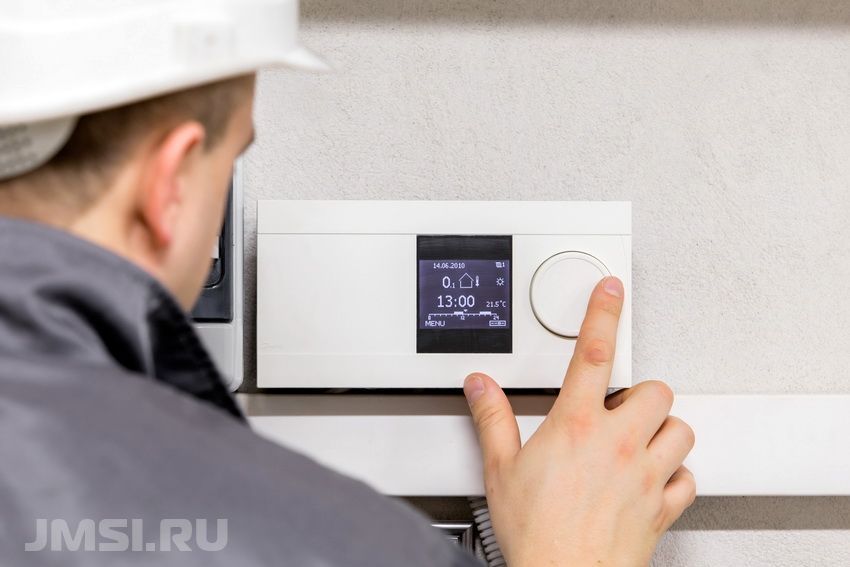
For the correct setting of the operation of the thermostat for the heating boiler, it is better to contact the specialists
By means of buttons two modes are set: optimum and economical. Thus, during the day the temperature will be at the optimum value, at night the temperature will drop to a level sufficient for a pleasant sleep. This mode will significantly save on energy resources. Various models of thermostats have several preset modes, one of which can be selected for use.
Helpful advice! In rooms where children and the elderly are most often present, it is recommended not to lower the temperature below 22°C.
Temperature controllers for electric heating boilers: how to choose a device
In places where gas supply is not available, for space heating use electric boilers. Among the advantages of such equipment, there is no need for a chimney device, ease of installation, environmental friendliness, quiet operation, high performance and equipment with a control unit for functioning in automatic mode.
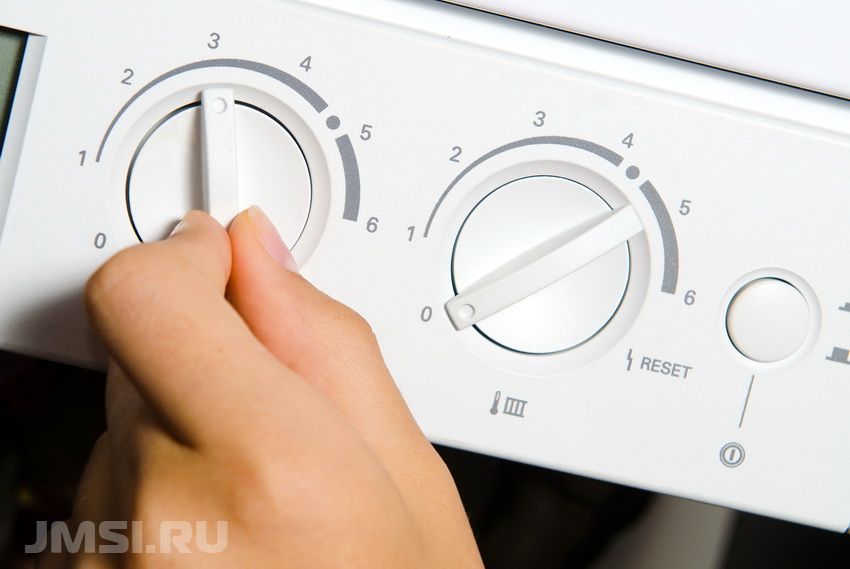
It is enough to install and adjust the thermostat for the heating boiler and it will maintain the temperature automatically
The disadvantages of electric heating include one, but quite a significant drawback - a significant consumption of electricity. This leads to the high cost of electrical heating systems. Installing a thermostat for an electric heating boiler will reduce energy costs by 20 to 30% and set up an individual heating mode for each room.
As with other types of heating equipment, it is possible to use an electronic or mechanical room thermostat for electric boilers. The type of device is selected depending on what options are needed in your particular case. Mechanical models are simple and inexpensive, but may not work accurately. Electronic programmers are accurate, multifunctional and allow the equipment to operate in an economical mode without the intervention of the owner.
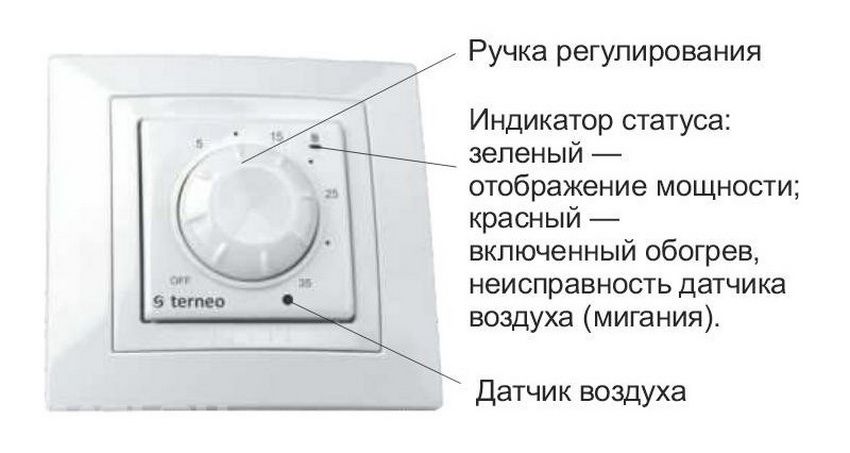
Wall thermostat design for electric heating boiler
Before you buy a thermostat for an electric boiler, you need to decide on the temperature regime used and take into account the area of \u200b\u200bthe heated room. It is recommended that the purchased thermostat and electric boiler be produced by the same manufacturer. Models manufactured by Baxi, Ariston, Salus Controls ltd, BOSH and others are popular.
Helpful advice! A voltage stabilizer will help to ensure uninterrupted operation of the electric boiler and electronic thermostat in case of possible voltage drops in the network.
Where to buy thermostats for heating boilers
You can buy thermostats for gas boilers, electric and solid fuel heating equipment at specialized points for the sale of heating equipment, as well as on websites and online stores selling elements of heating systems. The catalogs contain a huge selection of modern thermostats various types from leading manufacturers. All devices come with a manufacturer's warranty.
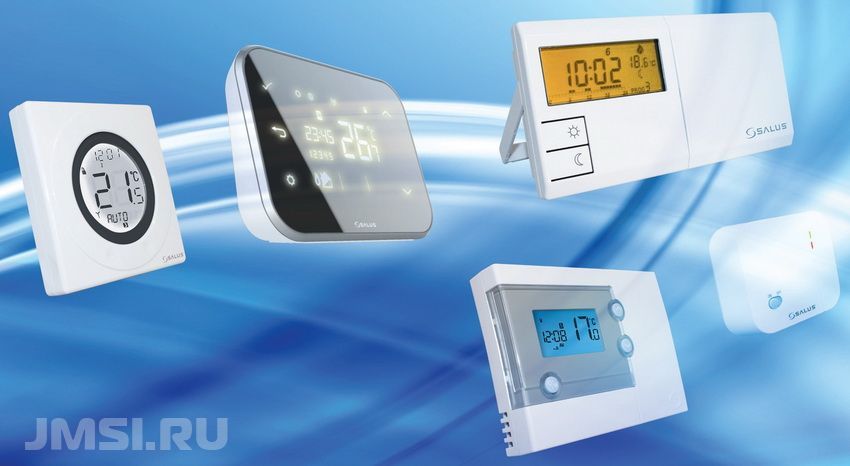
The modern market offers a huge selection of thermostats, both simple and the latest models.
The product range includes wired and wireless models, mechanical and electronic thermostats for solid fuel boilers, gas, electric and diesel installations, as well as convectors, infrared heaters and underfloor heating systems. All products from the catalog have quality certificates.
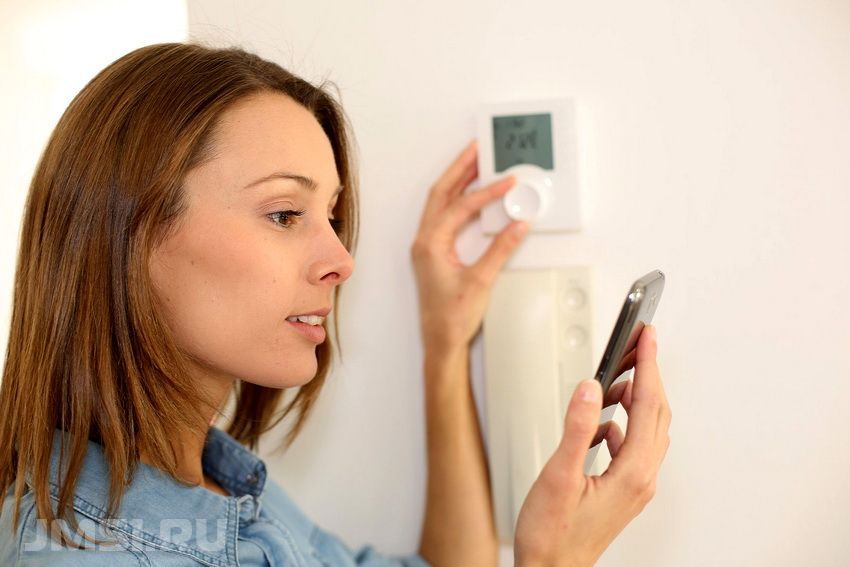
Having bought a thermostat through an online store, you will receive a high-quality device and qualified advice from specialists.
The advantage of online shopping is also that it is possible to get acquainted with the cost of devices in different companies and make a comparative review of prices. By choosing a thermostat, you can get competent advice on its installation, connection and configuration. Some companies offer installation and commissioning services for the device. All questions you are interested in can be clarified by phone numbers placed in the contact section.
Prices for thermostats of different models
The cost of thermostats for heating boilers depends on the type of device, the number of supported functions and the manufacturer. The most advanced models of programmable thermostats with a large selection of settings will cost much more than models of simple mechanical devices, but their level of accuracy is much higher.
When choosing one or another type of device, it is worth considering the level of energy saving that it can provide to the heating device and the degree of convenience in controlling the equipment to achieve a comfortable indoor climate. The approximate price of a mechanical thermostat for a Baxi heating boiler with a temperature setting range of 5 to 30 ° C and frost protection is 1180 rubles.
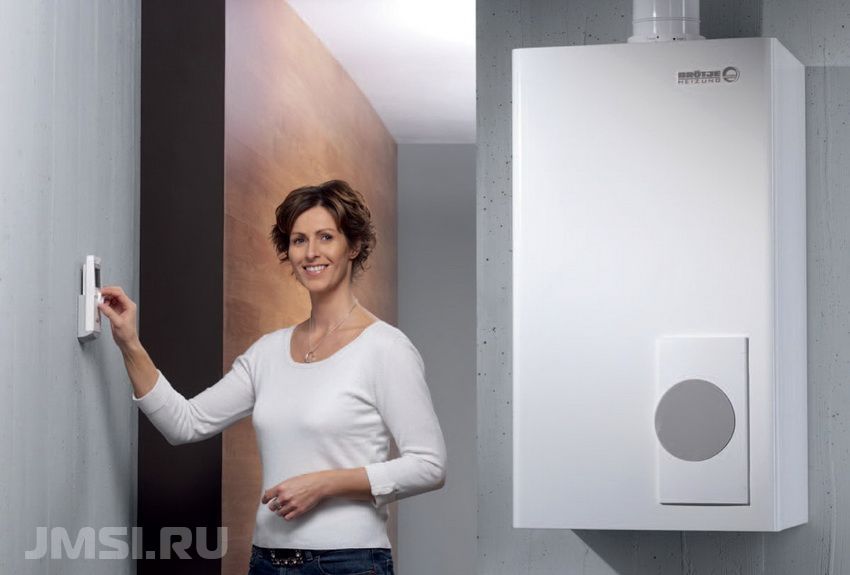
You can buy a room thermostat for a mechanical gas boiler model SAS816WHB-0 with a 5-minute response delay option for 1490 rubles. A feature of this device is the ability to control not only the operation of gas heating equipment, but also the operation of the air conditioner.
Room mechanical thermostat Cewal RQ10 will cost you 790 rubles.
The estimated cost of an electronic wireless thermostat for the Salus Controls 091 FLRF boiler is 5200 rubles. The device functions include two heating modes (economical and comfortable), setting programs for the week, three levels of temperature control, 9 heating system control programs. You can buy a thermostat for a solid fuel boiler AURATON S14, which is a multifunctional device, at a price of 6700 rubles.
By purchasing a thermostat for a heating boiler, you can not only set a comfortable temperature regime for each room in the cold season, but also extend the life of the heating equipment.
Automation of heating equipment is used for ease of management, economical consumption of energy resources. In order to properly use the thermostat for a heating boiler (temperature controller), it is necessary to study modern engineering solutions. An overview of the current market situation is useful. It is also necessary to evaluate the possibility of performing installation operations on your own, without resorting to expensive professional services.
Why do I need a thermostat for a heating boiler (temperature controller) in rooms
When developing new heating equipment great attention focus on the efficiency of the use of energy resources:
- Electric heaters are created in such a way that the formation of useful infrared radiation occurs with maximum efficiency.
- They install constant flame control systems that optimize the combustion process.
- When using solid fuel, chambers of complex shape are created on the path of combustion products output. Here the temperature increases further.
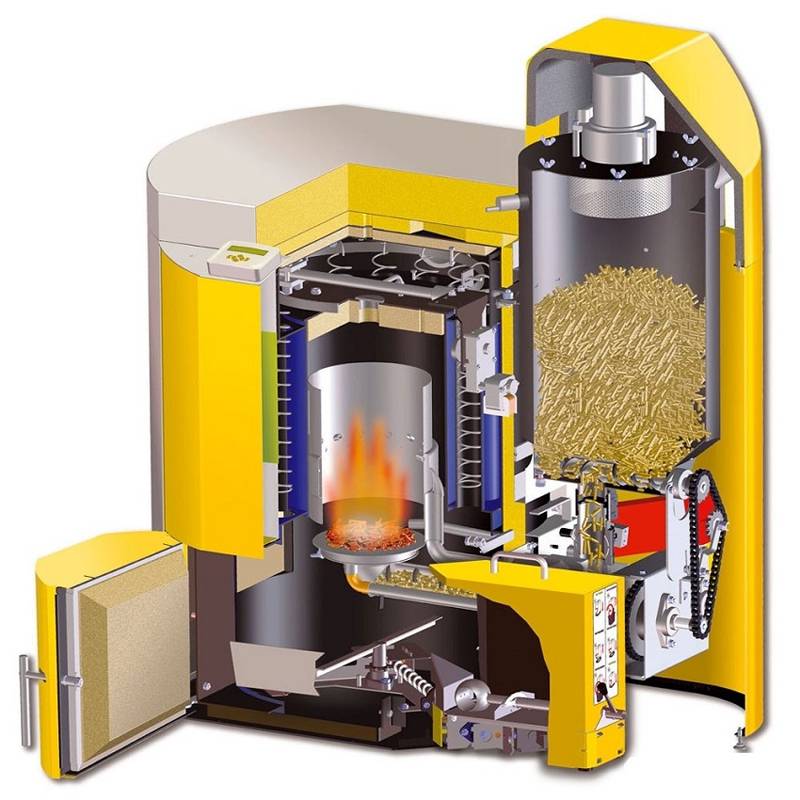
But the rational use of electricity and fuel will be useless if the optimal consumption of the generated heat is not ensured. To solve this problem, certain parameters of individual components are needed.
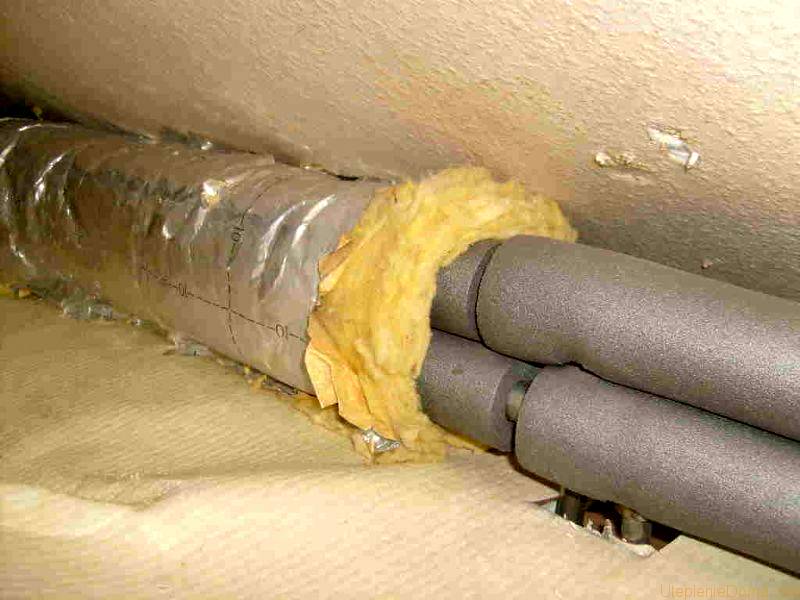
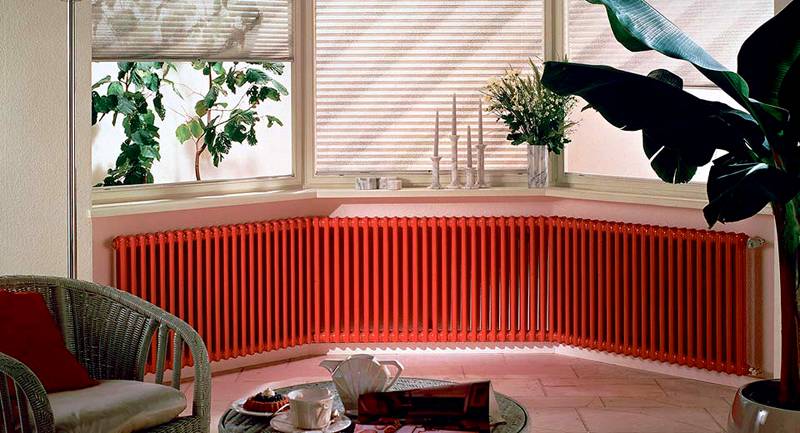
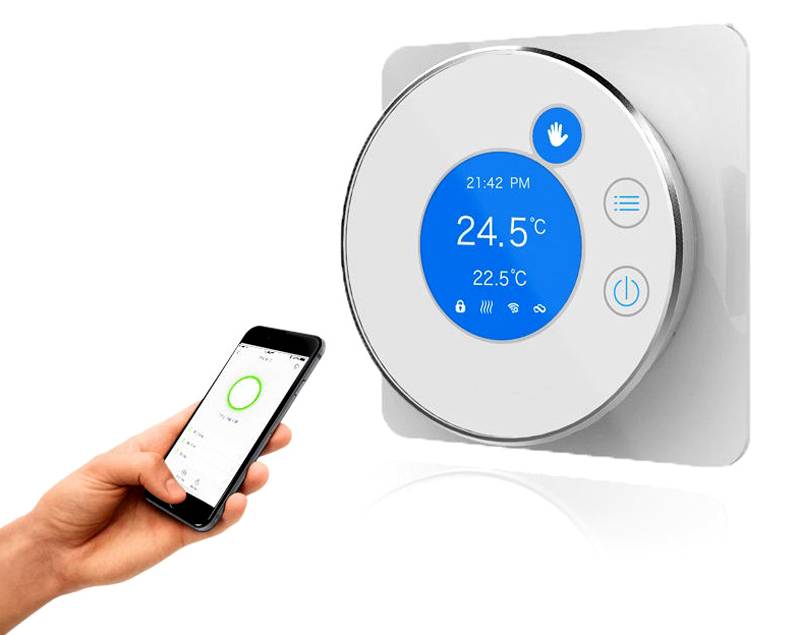
To fulfill the latter condition, it will be necessary for the heating boiler (temperature controller). With the correct use of this technique, you can get at your disposal the following advantages:
- Maintenance of the set temperature in automatic mode, without the need for careful control.
- Energy Saving ( Money) up to 30% or more.
- Opportunity remote control, a quick transition to special modes.
- Extending the service life of boilers through careful operation.
For your information! Optimizing the operation of the equipment using a temperature sensor for a heating boiler will extend the time battery life when disconnected mains supply. From the built-in battery, the equipment will work for a long time, which will increase the time for calling specialists and eliminating an emergency.
Functions of a temperature sensor for a heating boiler: regulation of the temperature of the heat carrier
Typical gas equipment works as follows. The burners heat the coolant to the level desired by the user. He is not constant value. In systems, the temperature is not more than +40°C. It is raised to + 50 ° C and above. A special pump is used to circulate the fluid around the circuit. As soon as the temperature reaches the desired level, the flame goes out. When the coolant cools down, the heating turns on again.
This scheme of work has the following features:
- The burner ignites quite often for a short time. It works for about 2-3 minutes during one cycle lasting from 5 to 15 minutes.
- Usually, circulation pump turned on all the time.
- When changing weather conditions and indoor temperatures, the user must reconfigure the equipment.
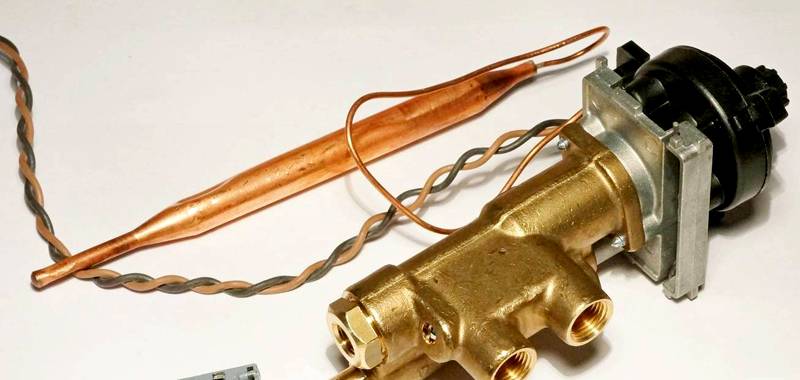
The cost of such a thermostat for a heating boiler (mechanical) is not high, but the final price of such a solution will be high. The situation will not change dramatically if cutting-edge electronics are used. In this case, the problem is created by the principle itself - the control of secondary parameters. The temperature of the incoming liquid is checked, and not the parameters in the room, therefore, corresponding errors appear, and the inertia increases.
Temperature control inside and outside the premises
It would be wiser to move the measuring instruments to a residential area. If you install sensors here, it is easier to optimize the operation of the boiler. But not all models of equipment are designed for such connections. In some cases, upgrading with original manufacturer products is too expensive.
To solve the problem at a reasonable cost, it is useful to purchase and install an external room thermostat for a gas boiler.
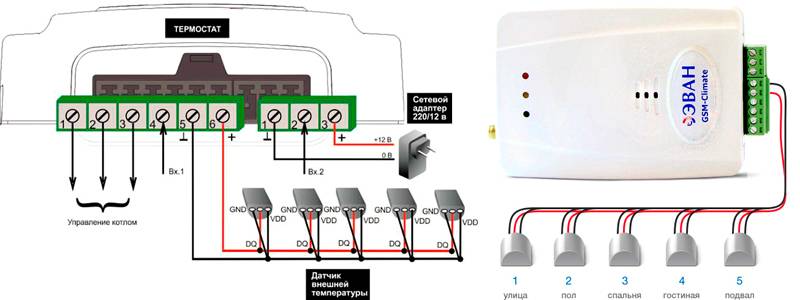
A modern boiler control system consists of several parts:
- In this embodiment, the temperature sensors in the rooms and outside air are connected directly to the thermostat.
- Power is provided by the AC adapter. Built-in accumulators provide maintenance of working capacity at disconnection of 220V.
- For remote control, a GSM unit is installed here. With it, the user will receive operational data on the temperature inside the premises. If desired, it turns on the desired mode by applying a control signal from a smartphone or tablet. These functions are performed under the control of specialized software.
- Commands to the boiler are received via a wired connection. They include heating and a pump. This is more economical than the built-in thermostat discussed above. The air temperature decreases more slowly than the coolant, so the ignition frequency of the burner is reduced. In such conditions, the service life of equipment is extended.
Important! Boilers compatible with room thermostats must have special “Room Thermostat” input sockets on the control board. The corresponding options are listed in official instructions manufacturer.
The algorithm of operation of such equipment in a complex deserves high marks. If the sun came out, the temperature rose outside, the boiler would not turn on. It became colder in the room after airing - no need to reconfigure the heating equipment and further set the regulators to the normal position. Necessary actions will be performed automatically. Literally in one season, you can recoup the investment made. But in any case, a more thorough study of the parameters of equipment and models on the market is useful.
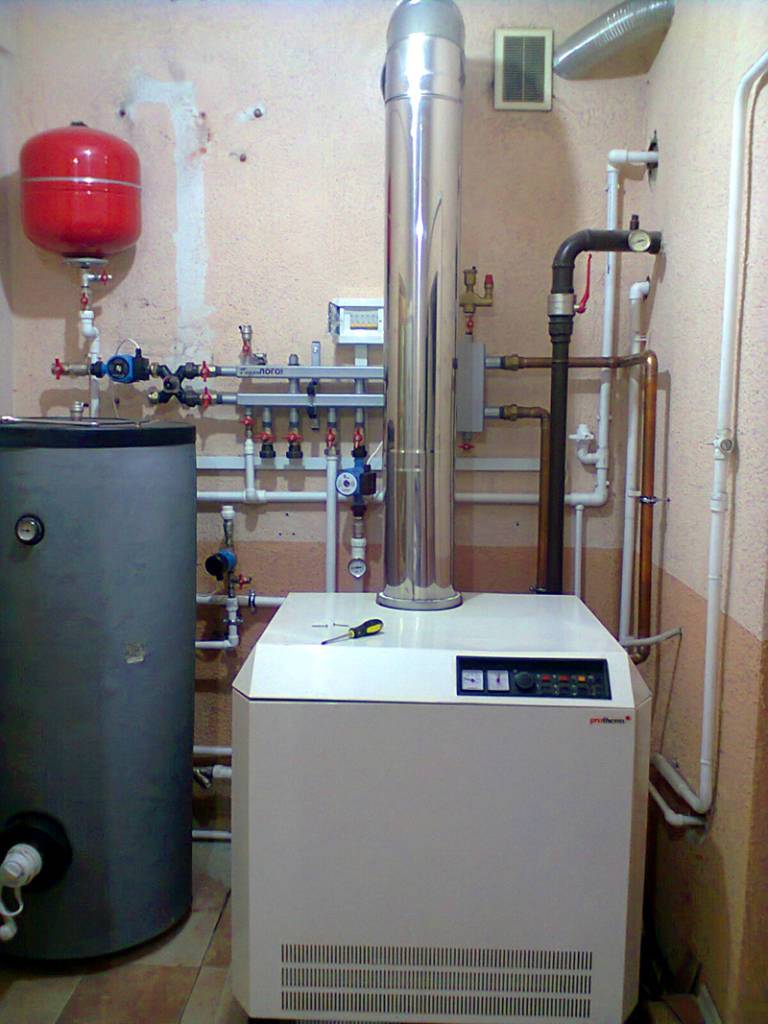
In order to correctly select the appropriate equipment, it is necessary to consider the need for outdoor temperature sensors. In some models of boilers, they are connected directly to the standard electronic control board. With their help, the parameters of inertial processes are optimized.
So if the user has set an excessively high temperature, and it has become warmer outside, the batteries will continue to heat even when the boiler is turned off by the thermostat. If there are sensors outside the room, the desired command will be given faster. The actual savings in the process of their active use is small. Therefore, these enhanced features are evaluated in conjunction with a certain increase in cost.
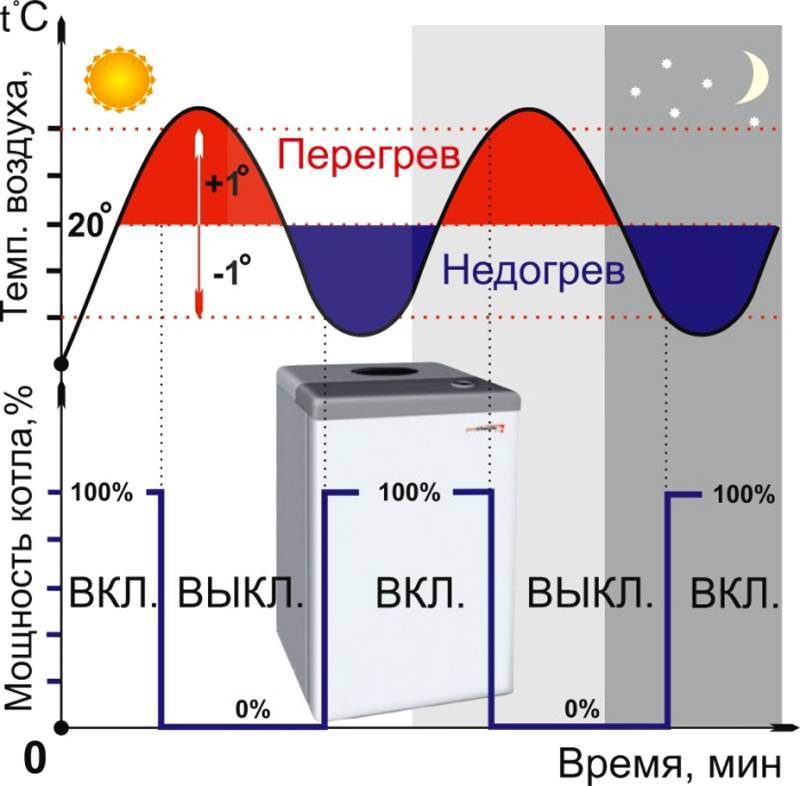
Varieties of technology and selection criteria
Temperature controllers for heating boilers (temperature controllers) are equipped with various hardware and software blocks. The following are additional features and technical features modern models:
- Temperature adjustment sensitivity in steps of 0.2-0.3°C.
- Setting individual switching times for each day of the week.
- Quick selection of a standard program and creation of algorithms based on personal preferences.
- The use of safety relays, in which the formation of sparks during switching is excluded.
- Maintaining performance in a wide range of temperature and humidity.
Some important details shown in the figures.
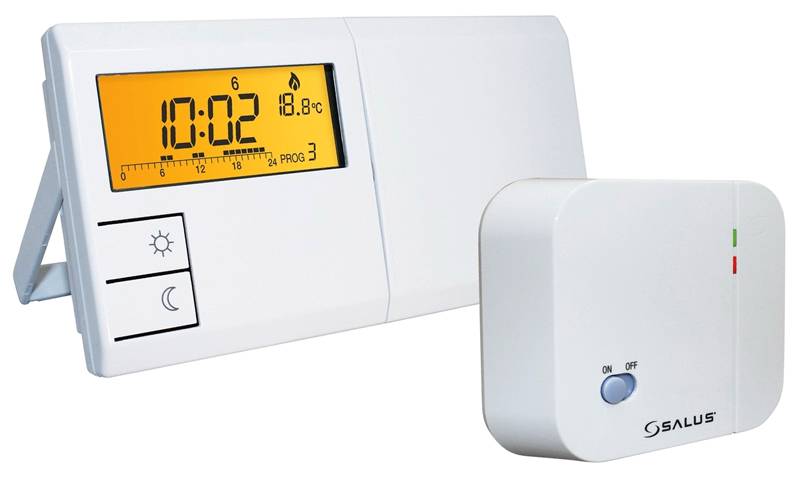
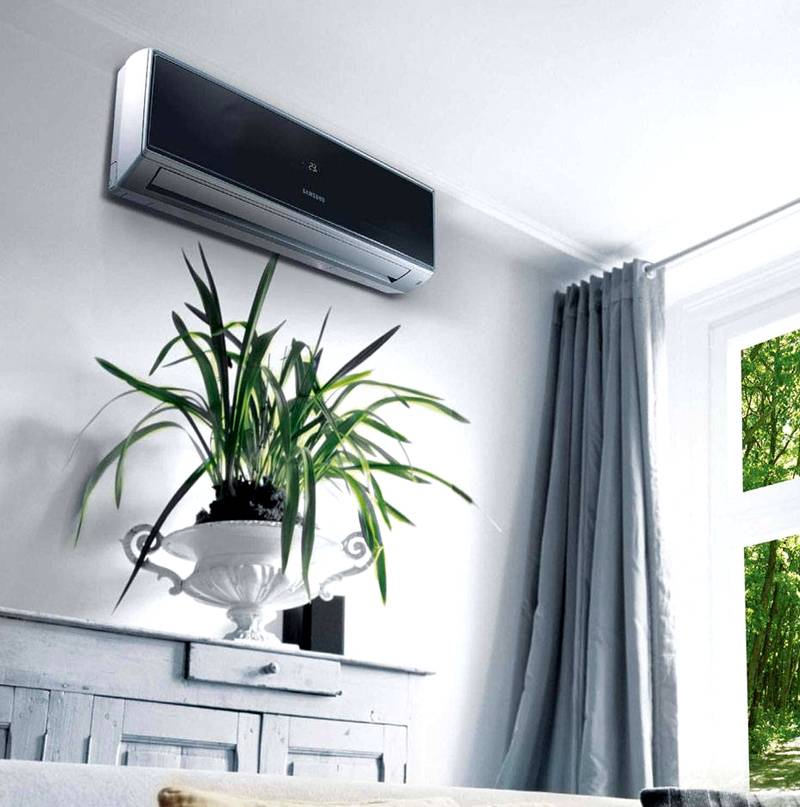
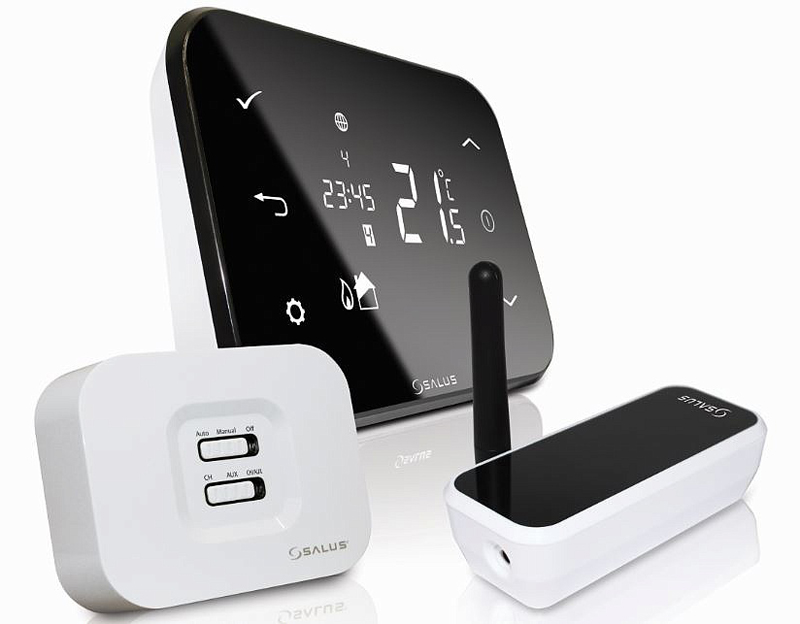
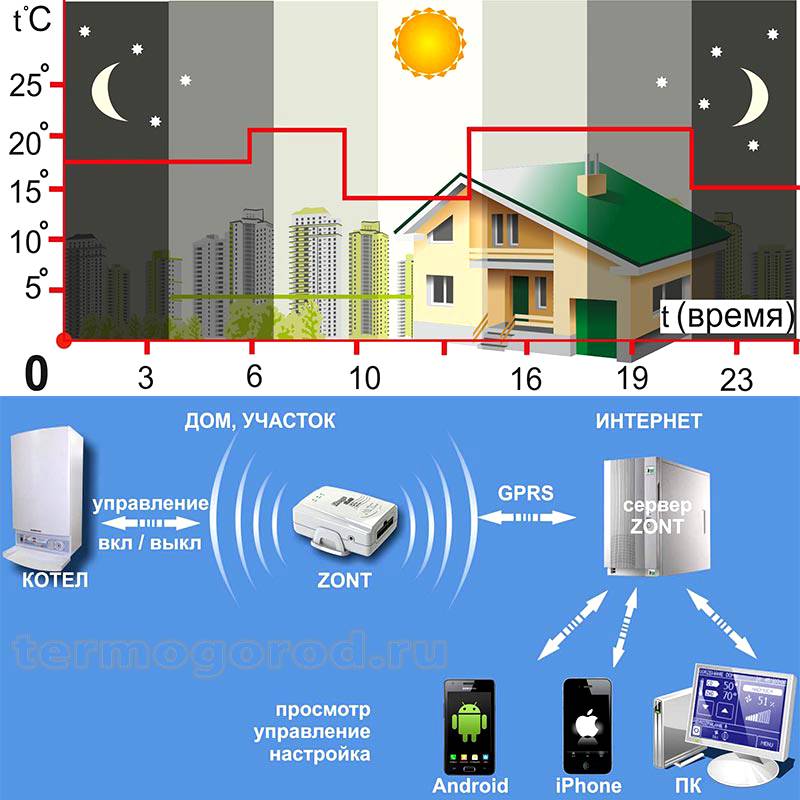
How to purchase a temperature sensor for a heating boiler: market overview
| Drawing | Brand/Model | Adjustment range, °C | Minimum actuation step, °C | price, rub. | Comments |
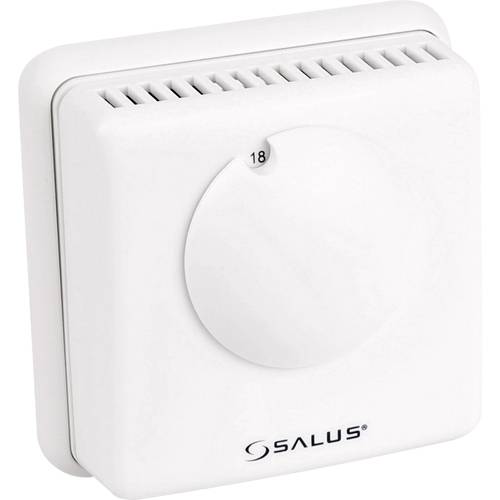 | Salus/Controls RT100 | 5-30 | 0,5 | 880-980 | The simplest model, without a screen. Suitable for underfloor heating. |
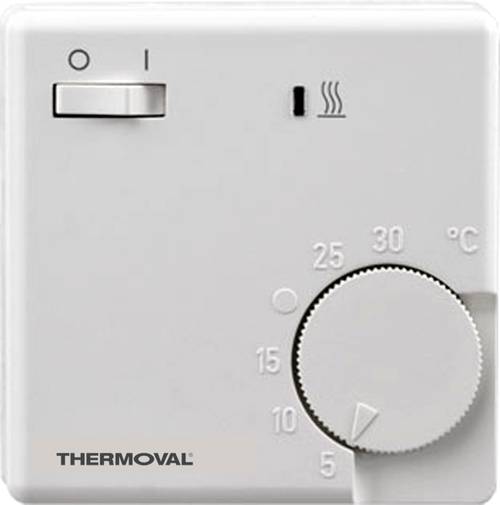 | Thermoval/ RTE-E-3502 | 5-30 | 0,5 | 1050-1200 | Protection against external influences according to the IP30 standard. |
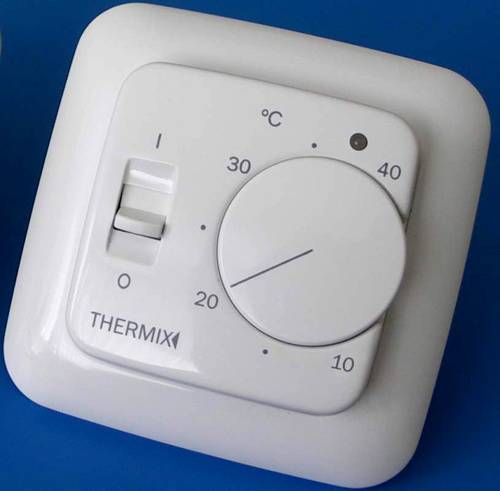 | Thermix/ RT001H16M | 10-40 | - | 1900-2050 | Mechanical control. |
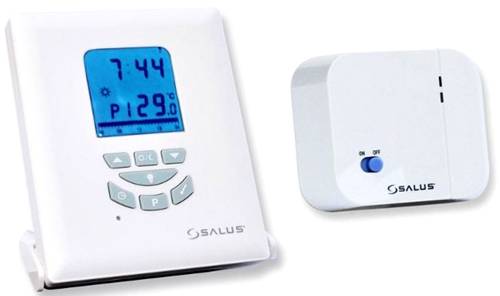 | Salus/ Controls T105 | 7-30 | 0,4 | 2050-2200 | Programmable controller. Monochrome backlit display. |
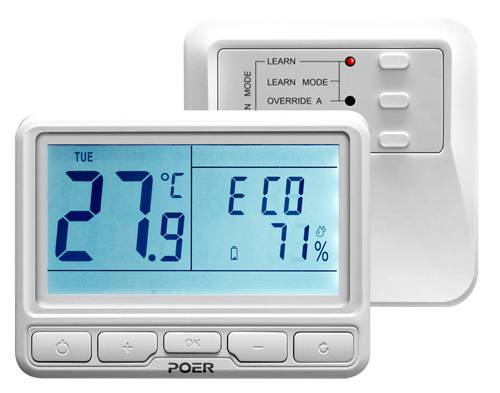 | Poer/PTC10 | 7-32 | 0,5 | 2100-2250 | Ability to connect to the Internet using an additional set of equipment. Wireless connection of receiver and thermostat. More than 20 programs. |
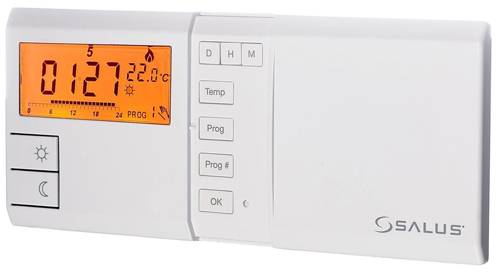 | Salus Controls 091FL | 5-30 | 0,5 | 2180-2300 | User programs, frost protection system. |
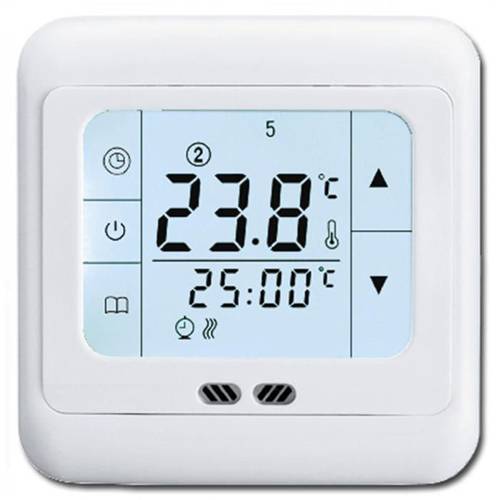 | Grand Meyer/PST-2 | 5-35 | - | 3400-3600 | Concealed installation, programmable regulator. |
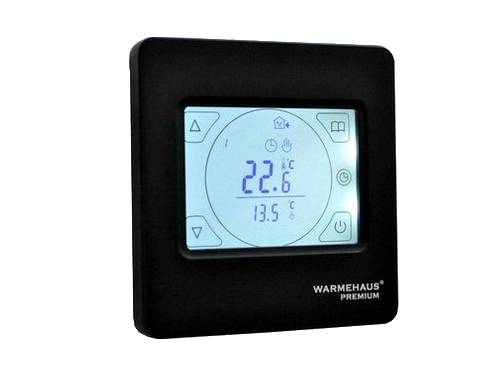 | Warmehaus/Touchscreen | 5-35 | - | 7300-7950 | Touchscreen monochrome. |
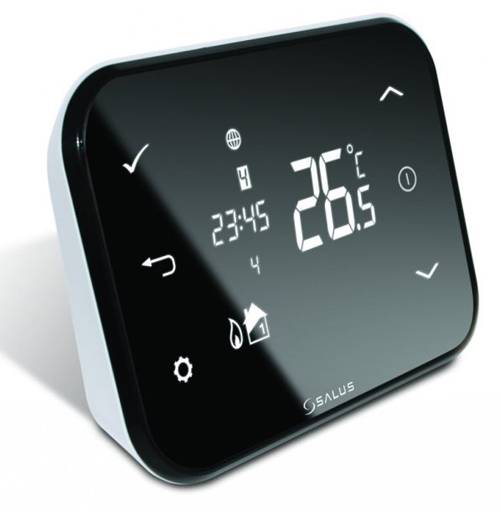 | Salus/Controls iT500 | 5-35 | 1 | 10800-11300 | Remote control, touch screen, Internet connection. |
How to connect a thermostat to a boiler
It is more convenient to work with temperature controllers for heating boilers that support wireless connection. For example, the algorithm for installing Salus / Controls iT500 is given:
- The controller unit of such a device can be placed in any room at a distance of up to 30-50 meters from the receiver. It is desirable to prevent unwanted external influences on the thermostat. It is fixed on the interior walls, away from, not in direct sunlight. But installation in niches, other places where the natural circulation of air flows is difficult is not recommended.
- Less distance will be obtained if there are thick reinforced concrete walls and other obstacles to the propagation of radio waves on the corresponding line. Signal transmission is carried out at a carrier frequency of 868 MHz.
- If several kits are mounted on the site, you can change the encoding. For this, a DIP switch is used. Assume a choice of 32 options. The distance between the receiving units is kept more than 90 cm to avoid false positives.
- The Salus/Controls iT500 is built to be safe, allowing it to be used near gas appliances.
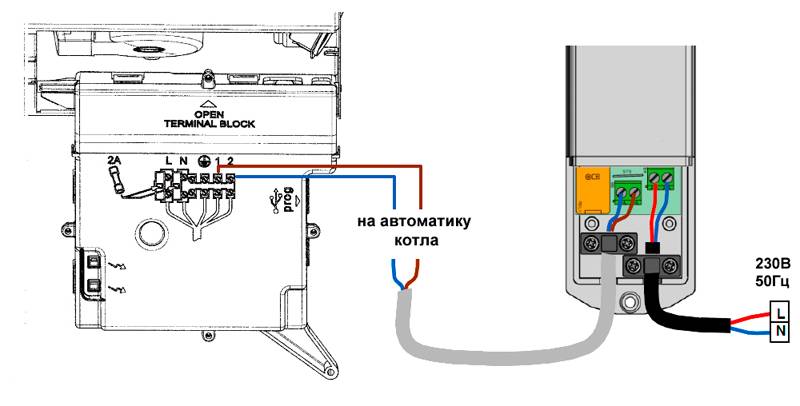
The previous operations are performed with the 220 V power off.
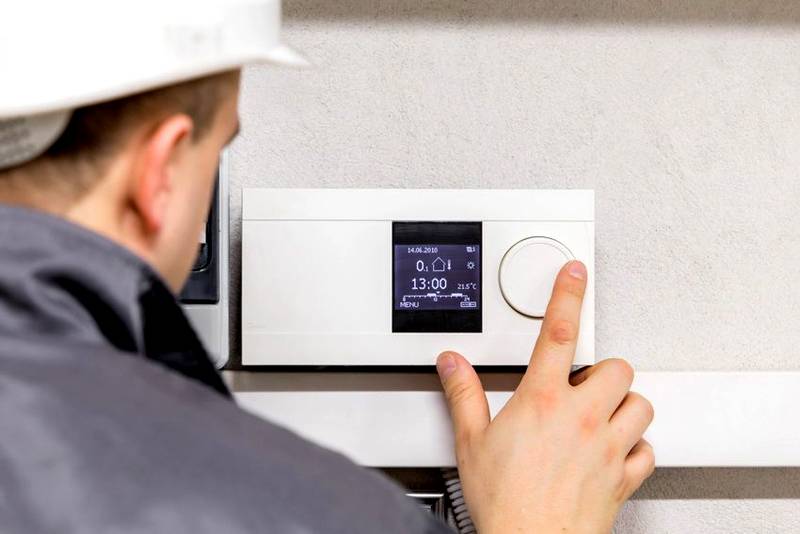
General conclusion
The use of a wireless thermostat for a gas boiler simplifies the operation of heating equipment. The simplest models are inexpensive. But their installation is associated with the laying of wired communications. Therefore, the total costs may increase significantly compared to the preliminary plan. More complex sets use the radio band to transmit control and control signals. The installation of such products is not difficult to carry out independently. Their high cost is due to advanced functionality.
A solid fuel heating boiler is an option for those who want to have an autonomous, inexpensive heating system that does not depend on gas supply and electricity in their home. The main thing is to stock up on firewood, coal, wood pellets, sawdust and other solid combustion products, on which the boiler will work. And thanks to the process of long-term burning of solid fuel, the temperature in the house will always be the right one, and in order to control and regulate the temperature in the house, of course, you will need a thermostat.
Types of boilers and the need for thermostats
This type of heating system is often used cast iron and steel boilers. Both have both positive and negative characteristics. For example, steel have high heat transfer, fast heating and a relatively low price. But they can be affected external environment. Then, with corrosion or clogging, the entire thermal system can deteriorate. To avoid this, it is necessary control the temperature in the boiler and regulate the temperature regimes.
Cast iron, on the contrary, have high strength, practically resistant to corrosion and environmental influences, reliable and stable in operation, keep heat for a long time, consist of easily replaceable sections. But long-burning solid fuel boilers, according to experts, can only fail in the event of sudden changes in temperature. Therefore, when installing such a boiler, it is necessary to properly and professionally piping the boiler. And, of course, you need to constantly monitor the temperature regime and adjust it as needed.
According to experts, when using a thermostat, 15-20% of fuel is saved, heat is stored in the required parameters, and, if necessary, the entire heating system is turned on or off.
What is the difference between a thermostat and a thermostat
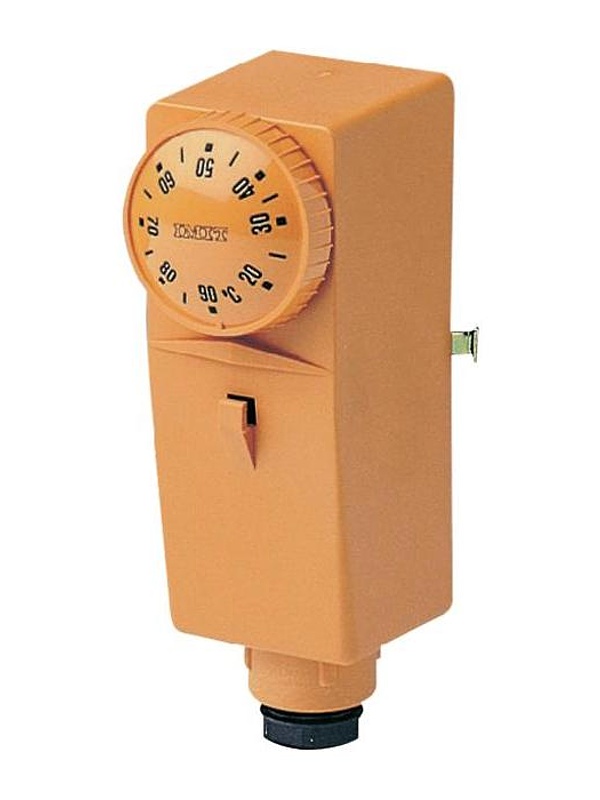 The thermostat is already included in the heating system and is responsible for the operation of the coolant. This is a mechanical device, which, as a rule, Its plus is that you can constantly monitor the temperature in the coolant, this process does not depend on the availability of electricity in the house. Minus - you will regulate the temperature manually.
The thermostat is already included in the heating system and is responsible for the operation of the coolant. This is a mechanical device, which, as a rule, Its plus is that you can constantly monitor the temperature in the coolant, this process does not depend on the availability of electricity in the house. Minus - you will regulate the temperature manually.
Temperature controller - separately mounted mechanism, which automatically monitors the temperature of the coolant, the room, controls it, regulates the correct required heat supply. And does it all during the day automatically, without user intervention.
Nuances of use
Thermostats for solid fuel boilers must be set to average temperature in the house +20 degrees Celsius. But there are nuances:
- In the children's room, the temperature is preferably +22.
- In a room where elderly people live, people with disabilities +23.
- In the case of residence of hypertensive patients, it is better to keep a lower temperature regime of +18, +19.
- At night it is recommended +19, +21.
Types of thermostats
The choice of temperature controllers is huge - from mechanical thermostats to programmable, microprocessor-based.
- So called room regulators are installed in any room and react to the temperature in it. The main thing during installation is not to cover the devices with furniture, curtains, any objects. Then the indicators may not coincide with reality, and the whole system will fail.
- The valve regulator is tied to a specific fuel line and controls the temperature regime not of the boiler itself, but of the segment in a certain place where the valve is installed, mounted in the pipe.
- The automatic cylinder thermostat is the simplest device for a two-chamber conventional boiler. This device is installed on the boiler, programmed, as a rule, only on maximum temperature and causes the boiler to turn off when the temperature of the heating element exceeds the programmed one.
- Zone regulators - are programmed for a specific zone of the room and prevent not only shutdown or high temperature, but also report all the indicators that the consumer needs to know.
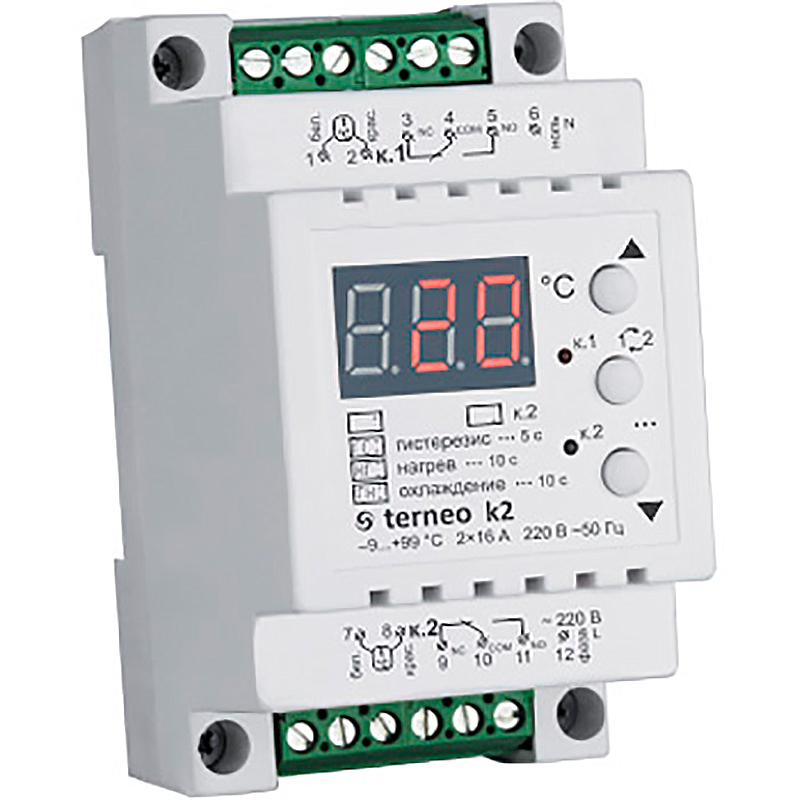
In addition, all thermostats are divided into:
- Wired.
- Remote.
The main selection criterion is ease of installation. It must also be taken into account that boiler and thermostat were compatible. To do this, you need to buy all the equipment from one manufacturer or seek the help of specialists.





